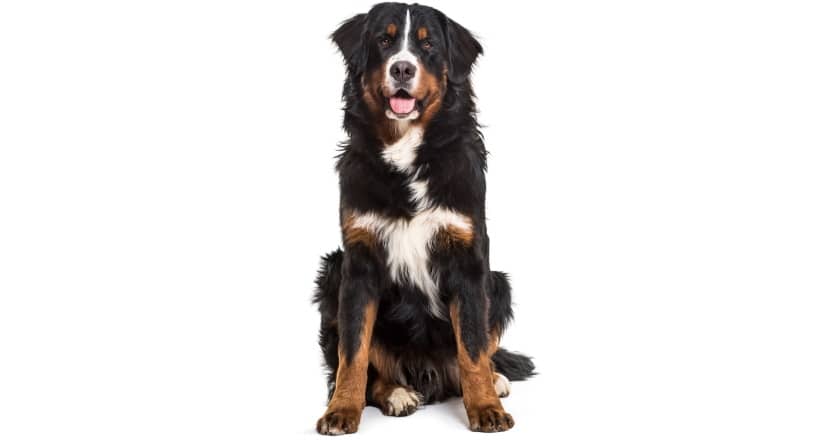The Bernese Mountain Dog, also known as the Berner Sennenhund, belongs to the UKC Guardian Group and the AKC Working Group. This breed originated from Switzerland and has a calm and good-natured temperament. The Bernese shares similar characteristics to other Swiss Mountain dogs but is one of four to have a magnificently long and silky coat.




Brief History
The Bernese originated from breeding local dogs and Roman Mastiffs. The Bernese was named after the Canton of Bern, a vast agricultural land used in dairy production for chocolates and cheese.
The Bernese were bred to pull carts, drive cattle, and also to guard sheep. By the late 1800s, this breed was dwindling, and it was during this time, the Berner breeders decided to reverse the breed’s decline.
By 1907 there was a Swiss breed club by Professor Albert Heim, and soon these dogs became popular as household companions and the most favored farm dog. The AKC registered the first Berner in 1937, yet the first Berner was imported into the US in 1926. Today, the Bernese Mountain Dog Club of America sponsors drafting and carting events to test these dogs’ working abilities.
Physical Description
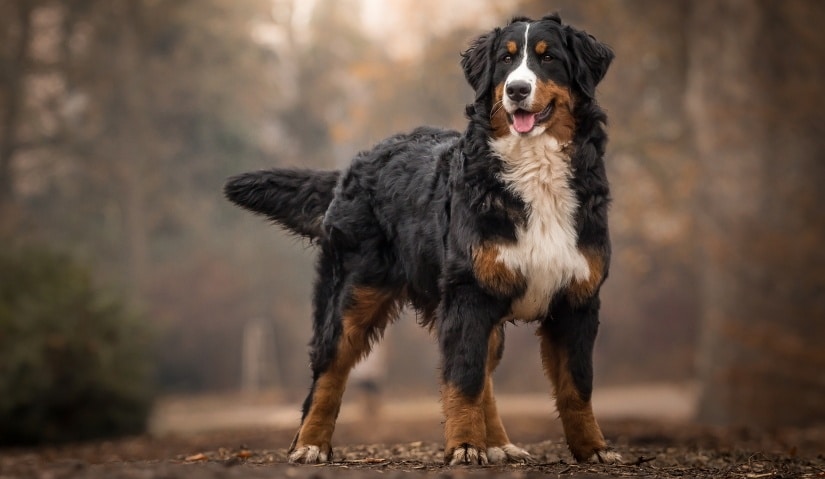
The Bernese Mountain Dog is a large, powerful tri-colored dog breed. This dog breed is muscular and is slightly longer than it is tall. With a large head with a flat, broad skull and abroad, strong muzzle, this breed has medium-sized triangular drop ears that are gently rounded at the tip.
The slightly oval-shaped eyes are dark brown, and the nose is black. The neck is of medium length, with the chest-deep and broad. The tail is long and bushy. The facial expression is always gentle, animated, and intelligent. The coat is tri=colored, with the base color being jet black. The markings are rust-colored and white, with rust appearing over each eye, cheek parts, parts of the chest, legs, and tail. The tip of the tail and feet are white.
Temperament
This is an easygoing dog breed that is super gentle yet confident. This breed may be shy around strangers yet tends to get along with everyone, including children and other pets. The AKC adds that “The temperament is self-confident, alert and good-natured, never sharp or shy. The Bernese Mountain Dog should stand steady, though may remain aloof to the attentions of strangers.”
Special Needs
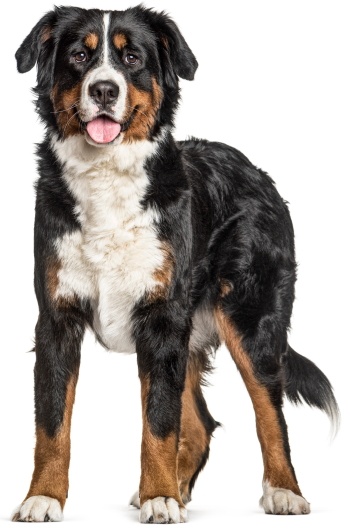
The Bernese does best with early socialization and positive puppy training starting during puppyhood. Additionally, because the Bernese is such a large breed, dog parents need to make sure not to allow this large breed to jump up on children or small pets when playing.
Everyday recreational activities like running, biking, and boating with your dog allow for fun family days. The socialization process should begin during the first few weeks of puppyhood. The Bernese needs to be exposed earlier to other people, small animals, and different noises. This breed needs to be handled, bathed, and groomed from puppyhood so that he learns how to relax and enjoy day-to-day life. Children need to be taught to have self-control when playing with this large breed to gently treat puppies and adult dogs and don’t encourage rough play.
Possible Health Concerns
The Bernese is a moderately active and healthy dog breed that may be susceptible to the following health problems:
-
Bloat: This breed is deep-chested and thus more prone to bloat. Bloat is a life-threatening emergency. It is caused by the stomach’s twisting, together with the accumulation of gas, with or without fluid. It is best to never elevate your dog’s water and food bowls.
Stress is also a significant factor in causing bloat. Never feed your dog a large meal, followed by vigorous exercise. At the first signs of dry vomiting, restlessness, and discomfort, contact your emergency veterinarian. Never wait for a few hours. This is a real life-threatening emergency!
-
Hip Dysplasia: is an abnormal development of the hip joint in large dog breeds like the Bernese. It is generally characterized by a loose joint and then degenerative joint disease. Dogs should be fed a high-quality diet that is geared towards their life stage.
Puppies should only be fed high-quality puppy dog food. Excessive growth, types of exercise, nutritional factors, and hereditary factors all play with hip dysplasia. Consult with your veterinarian for expert advice.
-
Progressive Retinal Atrophy (PRA) is the name for a group of diseases that cause the retina’s degeneration. This will include inherited abnormalities of light-sensitive cells.
-
Bleeding Disorders: Von Willebrand’s disease is an inherited bleeding disorder in the Bernese. This disease prevents blood from clotting normally. Excessive bleeding will occur after a cut or surgery.
Dogs that are affected will bleed from the gums and have numerous nose bleeds. This disease has no cure. Consult with your veterinarian if you notice any changes in your dog’s health. You can also have your dog tested for this today. This is most important to do before your dog has surgery.
-
Osteosarcoma: This is cancer affecting the bones and is the leading cause of death in dogs with cancer. Symptoms include pain, heat, swelling, lameness, and unwillingness to put weight on the affected limb. The course of treatment is usually amputation of the affected limb together with chemotherapy.
Exercise
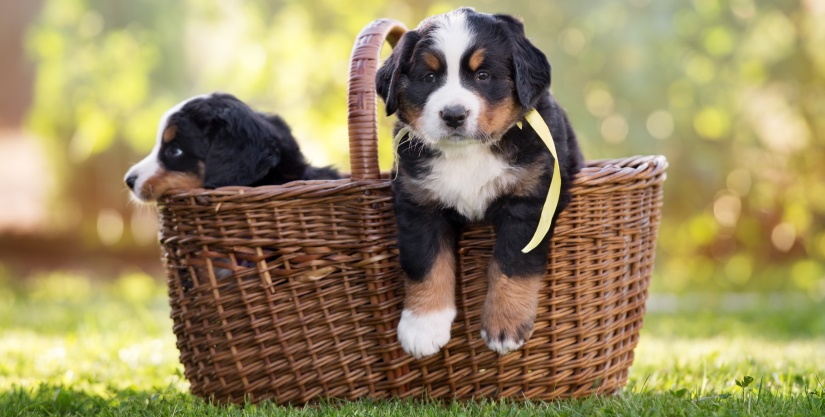
This breed is tons of fun and does best with an active owner in either a rural or suburban environment. It is a moderately active dog breed that thrives on environmental stimuli and exercise. This is a working dog breed that needs to have a job. This dog breed does well with a long walk instead of long-distance running. That said, the Bernese does enjoy the dog park and beach with plenty of off-leash runs.
Canine sports like agility, obedience, dock diving, Earthdog Trials, conformation shows, therapy work, Search and Rescue work, canine freestyle, and even lure coursing will allow for your dog to expend his energy. Try out many different canine sports to see which sport your Bernese prefers the most. This breed may do well as a medical alert dog because of its super sweet temperament.
Herding and Frisbee are also stress-free ways that your dog can have fun. That said, some of the best activities you can have with your dog are unorganized, like going out for a long hike. Plan hikes and all exercise schedules for cool mornings and late afternoons during the hot summer months. This dog breed thrives in the snow and cool temperatures.
Nutrition
Good nutrition is key to good health in dogs. Always opt for the very best high-quality dog food that you can afford. Feed the appropriate food for the life stage of your dog. A lower protein (20%) based dog food is recommended during the hot summer months, while in the winter, a higher protein (32%) is recommended. Every dog is different, and a diet that works for one may not work for another.
Consult with your veterinarian about the best dog food options for your pup. Feeding the correct diet from puppyhood will save you a small fortune in veterinary bills later on.
Grooming
The Bernese Mountain Dog is super easy to groom. This breed has a woolly undercoat with a longer outer coat, and they do shed twice a year. It is necessary to take out the “old coat’ using a soft brush and metal comb.
That said, daily grooming is always recommended, along with regular bathing, brushing teeth, ear cleaning, and nail trimming. Visits to the veterinarian are recommended for teeth cleaning twice yearly.
Visiting a professional groomer will help keep your dog looking his best. As usual, pawdicures are a must, as is daily brushing of teeth to prevent periodontal disease. Ears need to be inspected regularly for ear infections and wiped weekly with doggie wipes.
Adopting a Bernese Mountain Dog
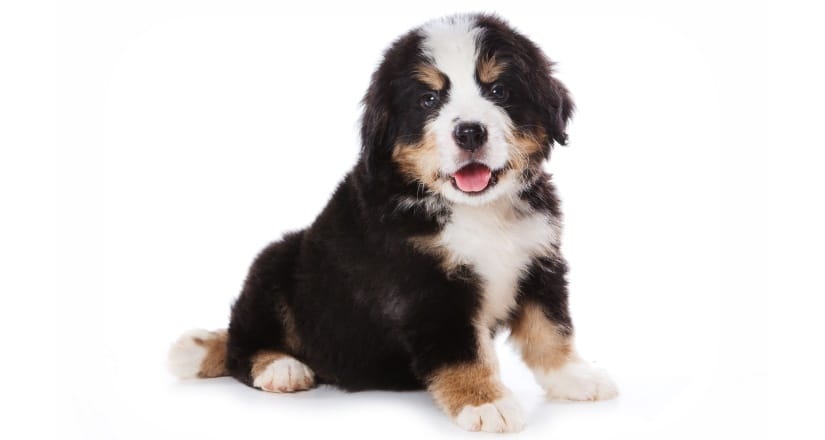
Breeds like the Bernese are wonderful additions to any home, especially those with children and other animals. This sweet and intelligent dog breed needs to be loved and treated with affection. The Bernese loves being everywhere with you. Bernese do not do well being left alone all day. They form a solid bond with their dog parents and family and tend to enjoy it most when everyone is at home together. This dog breed is a family dog.
Some normal behaviors may occur after adoption, including digging holes, barking, or perhaps being slightly depressed. Before adopting a Bernese:
- Find out about his past.
- Take your dog’s history into account when figuring out quirky behavioral issues.
- If any behavior becomes excessive, consult your veterinarian.
Give your new rescue time to adjust to his surroundings and entertain him with non-toxic, safe dog toys, soft blankies, tennis balls, and healthy dog treats. This dog breed enjoys the comforting scent of people, most especially family, including children. As with any dog adoption, make sure that you have the time and resources to take good care of your Bernese Mountain Dog.
